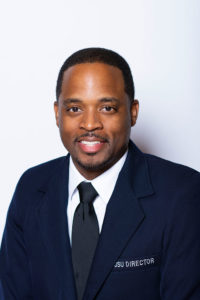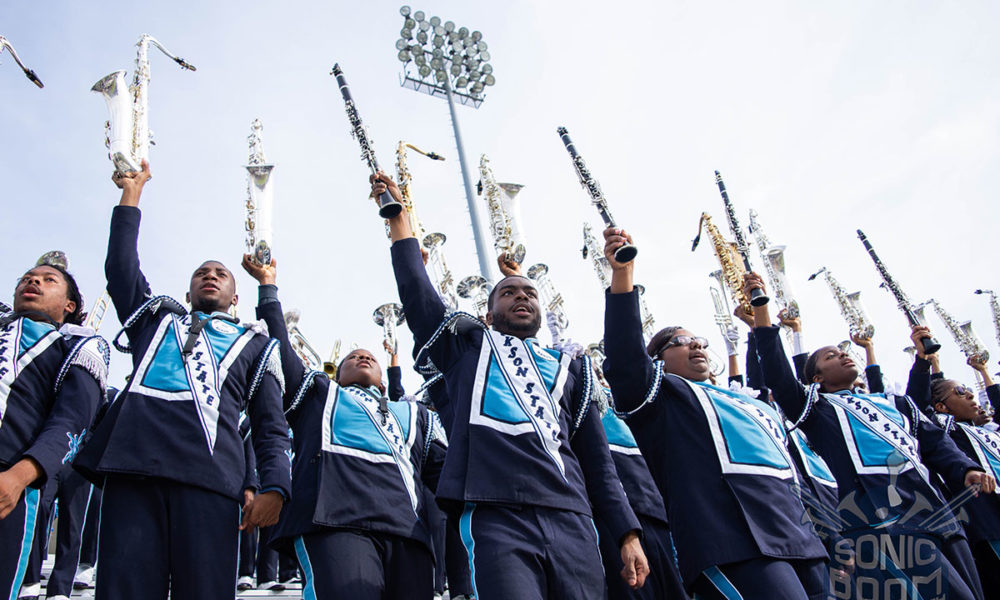Sponsored by BAND:
Events attended by and hosted by marching bands have many moving parts. Communicate early and often to ensure that all the pieces fit together seamlessly.

Aaron Snipes
From competitions to hometown parades, band events demand effective communication. As band directors manage communications—coordinating volunteers, handling logistics and instructing their own students—they may wonder what works best to keep events running smoothly.
Cover All Angles
In today’s technological climate, directors might worry about adding to the volume of posts and notifications that students and their caregivers already receive, but successful events require frequent, detailed communication. “There is no such thing as overcommunication,” says Chris Roberts, a past assistant corps director for the Santa Clara Vanguard Cadets, past program coordinator for Lynbrook High School in San Jose, California, and an independent music consultant.
At Braswell High School in Aubrey, Texas, the band starts communicating about events to parents and students very early. Every spring, a schedule of events for the upcoming summer, fall and winter is released. As events get closer, directors devote time to announcements every day in band classes. To prepare students and their families for band events, the staff distributes packets of detailed information like itineraries and checklists. “I’ve found that checklists are great, especially when parents and students have so many other things to worry about,” says Aaron Snipes, director of bands.
At Jackson State University (JSU), directors also give verbal announcements at the end of marching band rehearsals. Then they reiterate the information using a communications app. In addition, they encourage student leaders to communicate event details to their peers. “Students are used to hearing from band directors and adults, but hearing [information] from a peer’s perspective is another avenue to get them to pay attention,” says Dr. Roderick Little, director of bands.
Streamline the Process
Roberts says organizations should use one primary mode of communication, so that students, parents, and staff only need to look in one place for all information about an event. His groups are even further streamlined because they use the same communications app as Bands of America (BOA).
When directors register for a BOA event, BOA sends them an email with a QR code. The code lets directors join a group within the app devoted to the event’s communications. In the group, BOA posts daily schedules, itineraries, photos of parking areas, rehearsal staging areas as

Dr. Roderick Little
well as updates with semifinals and finals schedules, gate times, and warm-up zones. Roberts says he uses these updates to give students simple information on when they need to be ready and where. He gives parents more detailed information about how they can attend, and he keeps staff informed with a minute-by-minute schedule.
Bands also need to communicate event information to people outside of their organizations. The JSU Sonic Boom of the South hosts its own events like high school band camps. For events like these, the band relies on social media to advertise, share important information, and let participants know what to expect at the events. “Social media is huge in moving our program forward and disseminating information to potential recruits, alumni, and fans,” Little says.
Delegate and Share Responsibilities
Communicating to hundreds of people is a big task, and not one that Snipes, Roberts, or Little take on alone. Roberts says when attending events, directors should send a representative to scout out and update the band about the event locations. The Sonic Boom has its own media team started by alumni who want to give back. Snipes shares communication responsibilities by giving all directors, his top student leaders, and members of the booster board the ability to post updates in the band’s communication program, but he says accountability is key to avoid confusion. Each post, even his own, needs to have two approvals before it goes out.
About the Sponsor
BAND is a free group communication app and private social media hub for teams of all sizes. Schools, music directors, and leaders within the marching arts use BAND to better collaborate and manage their team’s activities. Schedule events, share documents and videos, organize by section, take attendance, send announcements, initiate RSVPs, communicate by chat, post, or live stream, and enjoy a number of other uses.



